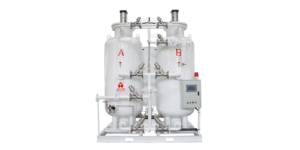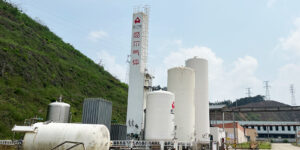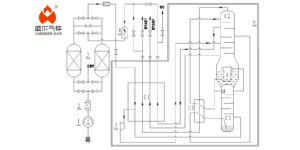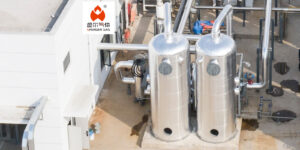In the world of coffee, nitrogen (N₂) has evolved from being just a mere element on the periodic table to becoming a trendsetter in coffee shops around the globe. If you’ve ever seen someone in a café order a coffee that looks more like a fancy beer with a creamy head on top, you’ve encountered the magic of nitrogen at work. Let’s dive into the frothy details of why and how nitrogen has become a star in the coffee industry.
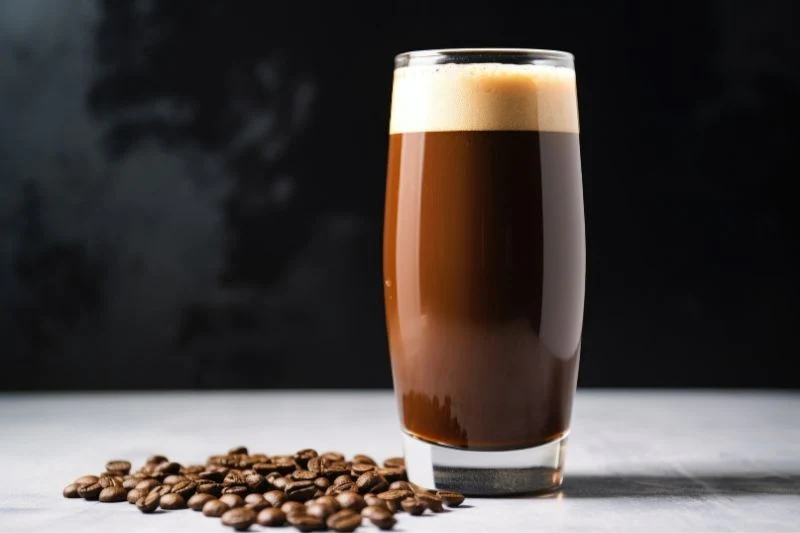
Nitrogen and Coffee: A Match Made in the Brewery
Yes, you read that right. The idea of infusing drinks with nitrogen actually comes from the beer industry, where nitrogen is used to create a smoother, creamier beer. Fast forward to the coffee industry, and we have what is affectionately known as “Nitro Coffee.” This coffee on steroids (figuratively speaking) combines the rich, bold flavors of coffee with the smooth, creamy texture of a Guinness beer, minus the alcohol and plus the caffeine.
The Science Behind the Bubbles
What’s the deal with nitrogen and coffee? The science is actually quite simple but fascinating. Nitrogen bubbles are smaller than carbon dioxide bubbles, which are commonly used in sodas. When nitrogen is infused into cold brew coffee under high pressure, it creates a rich, creamy texture that makes the coffee look and taste velvety smooth. The result? A cup of coffee that not only wakes you up but also pampers your taste buds like they’re at a luxury spa.
Nitro Coffee: The Smooth Operator
Drinking a Nitro Coffee is an experience akin to watching a silent movie star smoothly glide across the screen – it’s effortlessly elegant. The first sip introduces your palate to a smooth, almost silky texture, followed by the rich, robust flavors of the coffee, and finally, a frothy finish that feels like a soft blanket gently laying down your throat. It’s coffee, but with a vibe that says, “I’m sophisticated, but I know how to party.”
Why Nitrogen? Why Not Helium or Argon?
Imagine ordering a cup of coffee and then speaking in a high-pitched voice for the next hour – that’s what might happen if helium was used instead of nitrogen. As entertaining as that sounds, nitrogen wins for a few reasons. Firstly, it’s abundantly available and safe to use in food and beverages. Secondly, its inert nature means it doesn’t react with the coffee, preserving its taste and aroma. And lastly, unlike helium, nitrogen doesn’t risk turning your coffee shop experience into a scene from a cartoon.
Nitrogen in Coffee: Not Just a Gimmick
While it might seem like a novel idea, adding nitrogen to coffee isn’t just for show. The process enhances the coffee’s natural flavors, reduces its acidity, and adds a unique texture that you can’t get from your regular cup of Joe. For those who find traditional black coffee too bitter or acidic, Nitro Coffee can be a game-changer, offering a smoother alternative without the need for sugar or cream.
Nitrogen’s use in coffee represents more than just an innovative way to serve up our favorite morning beverage. It’s a testament to the coffee industry’s willingness to experiment and push boundaries, creating new experiences for coffee lovers around the world. As we continue to explore the vast possibilities within the realm of coffee, who knows what other elements we’ll start infusing next? Oxygenated coffee, anyone?
Nitrogen’s entrance into the coffee scene is a fantastic fusion of science and culinary art, offering a novel twist to our beloved coffee ritual. But, let’s tip our hats to the real MVP: the nitrogen generator. This pivotal device empowers cafes to whip up that smooth, creamy Nitro Coffee magic on demand. So, next time you’re sipping on a Nitro Coffee, remember—it’s not just the nitrogen working wonders, but also the trusty nitrogen generator, seamlessly merging tech with tradition to spruce up your coffee moment.



